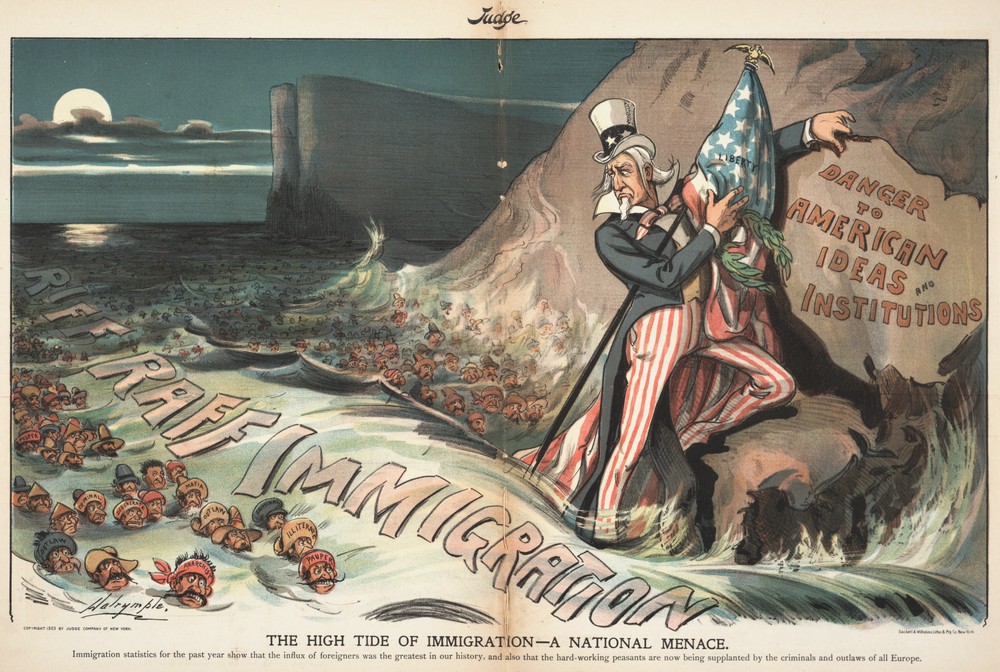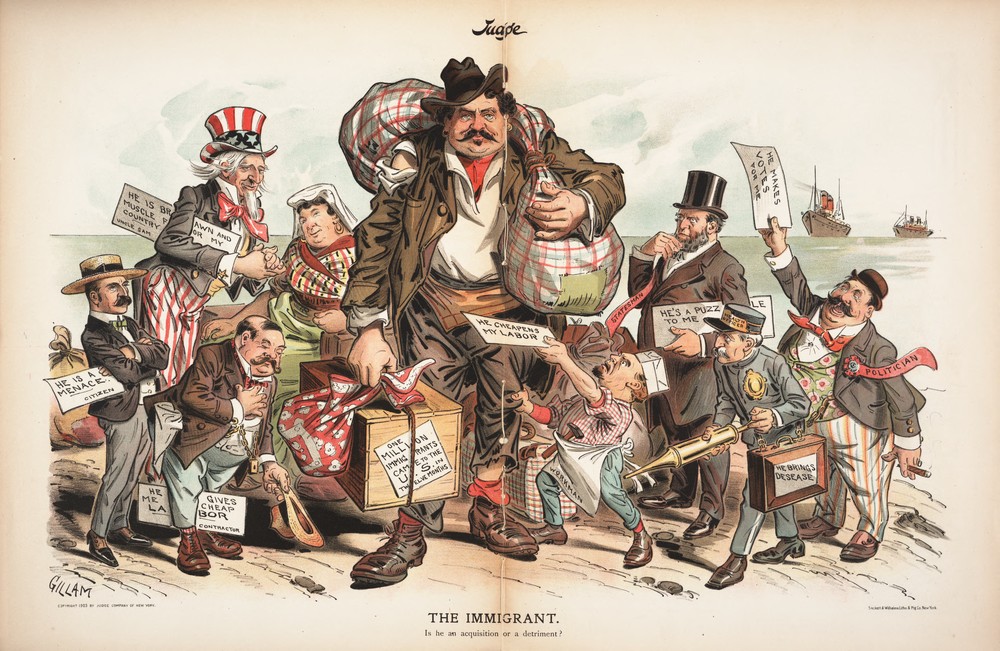
(Credit: The Ohio State University, Billy Ireland Cartoon Library and Museum)
At the end of the nineteenth and beginning of the twentieth centuries, the narrative of the dominant culture considered the United States an English speaking, White (fair featured), and Protestant nation. In this viewpoint anyone who didn’t speak English, didn’t have fair features, or wasn’t a Protestant, was considered a not White Other, and was excluded from complete participation in mainstream society. In the years following the Civil War, Black people faced oppression and racism with de facto segregation in the North and de jure segregation in the Jim Crow South. Anti-immigration propaganda and sentiment directed at anyone who differed from the American idea of Whiteness was rampant. In 1882, the US passed the Chinese Exclusion Act barring any Chinese person from entering the US, thus legislating racist and xenophobic ideas and stereotypes. White culture had constructed the idea of ‘Americanness’ in relation to race, ethnicity and religion, and those who did not fit into these standards were not considered White and therefore excluded from the full participation in the freedoms promised in the Constitution.
From the 1880’s to the 1920’s millions of people left their homes in Southern and Eastern Europe seeking better lives in the United States. Emigrating from the Russian Empire to flee from pogroms and religious persecution or from Italy to escape political unrest and instability, the immigrants who arrived from Southern and Eastern Europe spoke little English, often had darker features than White Americans, and practiced Roman Catholicism and Judaism. They brought with them different holidays, foods, music and culture. As these new immigrants left Ellis Island and headed into New York City and across the United States making homes for themselves and finding work, White America deemed these new immigrants not White, not yet American, and saw them as an Other.

(Credit: The Ohio State University, Billy Ireland Cartoon Library and Museum)